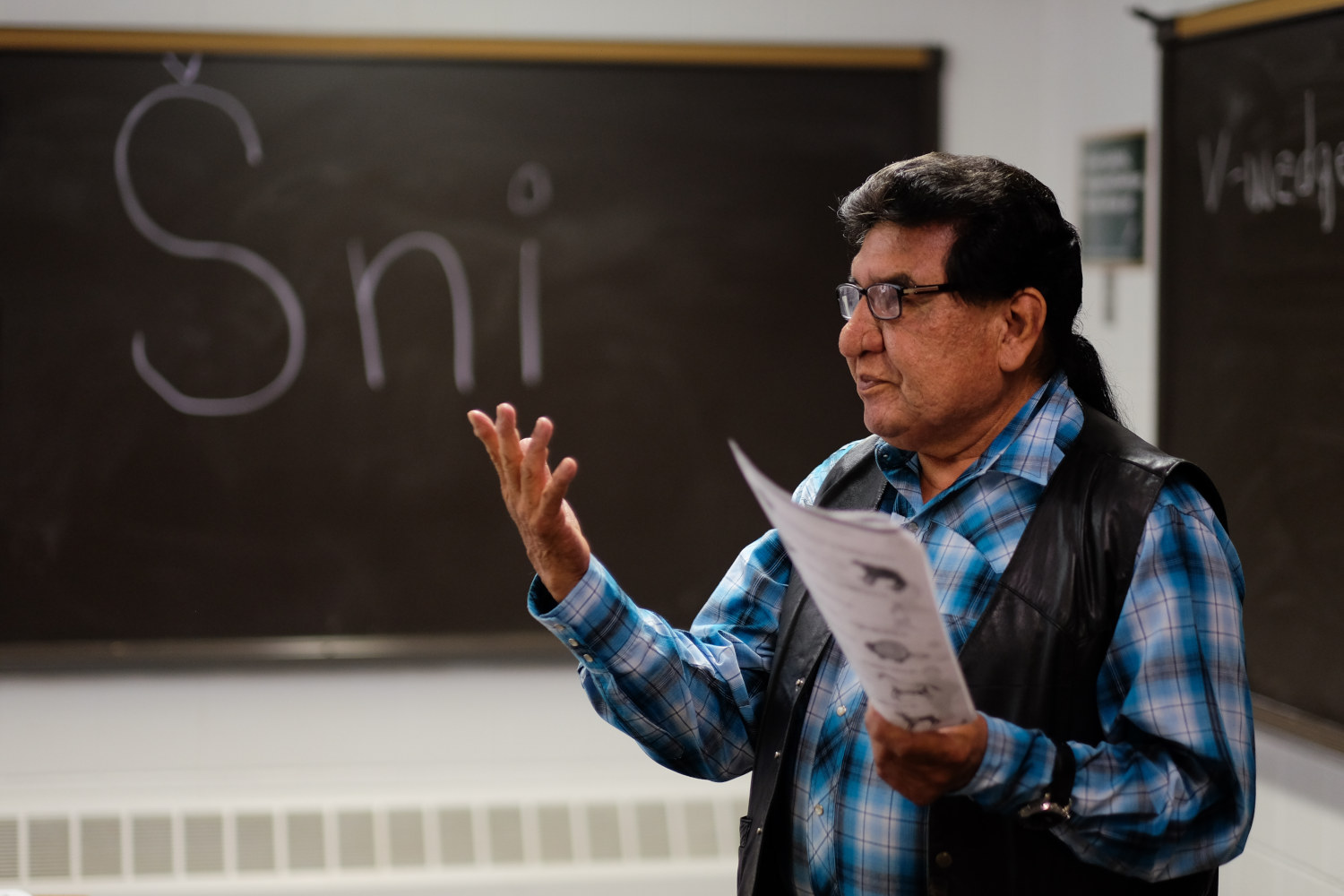Making Language Revitalisation Come Alive
Language revitalisation depends on events and media resources that facilitate the process of strengthening a language. These are central to building momentum for a successful revitalisation. At Summer Institutes, young learners, teachers, and language experts all get together in community around materials and methods. Shorter Language Weekends through the year serve to reinforce the progress made during summer institutes. Rapid Word Collections represent an integral part in the building of a language’s dictionary. Documentaries help explain what’s happening to the public. And cartoon series, like the Lakota Berenstain Bears, captivate the youngest generation as they learn to speak the language.
Language Learning Events
Held annually for a language, a Summer Institute provides professional development for teachers of the language and also offers a venue for adult learners to gain knowledge about their language. Over the course of two or three weeks, a Summer Institute nurtures fluency and strengthens the language and teaching skills of highly skilled indigenous language instructors. A Summer Institute immerses participants in active language-learning techniques and in second-language pedagogical methods, an experience which provides important classroom skills and knowledge. Teachers skilled in the language and trained how best to teach it to their students at a deeper level stand poised to give young learners a crucial step up to become not only self-sufficient in the language, but to become a part of the revitalisation of the larger community. Summer Institutes build teaching capacity and serve as an anchor for language revitalisation programs.
Dictionary Building Retreats
Many of our dictionary projects begin with a Rapid Word Collection, an exciting new method we’ve refined for recovering languages faster than ever before. Instead of travelling to and visiting with Elder speakers one at a time, we gather together all the remaining speakers of a language for an intensive retreat. We collaborate to record the words of that language. Using the power of association that drives human memory, speakers work with linguists to come up with every related word in a specific field. Category by category, we document the words of the language—sometimes for the very first time. Rapid Word Collection retreats forge new bonds across a community, connecting Elder speakers with younger members, and build excitement for the next steps of revitalisation, the production of resources like an online dictionary, textbooks, children’s picture books, and mobile apps.
Cartoon Series
For a language to once again become fully viable and self-sustaining, the youngest generation must reach fluency early in their schooling. Picture books develop crucial early reading skills and strengthen bonds between children and their parents and caretakers. But even from their earliest years, the dominant language can subsume a child’s attention. During this stage, partaking in the same media the dominant language uses but at least some of the time hearing instead the voices of their own native language maintains children in their indigenous cultural sphere and shows the youngest generation the value of their own language. Children being children, with a deep need for play, need the excitement of a cartoon series after focusing on lessons from a traditional textbook. By speaking, using, and being exposed to the language through dominant media, these youth gain and throughout their schooling retain their ancestral language. Decades later, speaking the language at home and out in the community, that generation can fortify their own children’s development in the language.
Documentary Films
Attention has slowly but steadily begun to turn toward the language loss crisis. But much work remains to bring a critical mass of attention to the problem as well as the resources to reverse the decline. Documentaries that show the extent of the crisis for a particular language community quickly bring the dire situation home to those outside the community. Yet these films also chronicle a community’s interest in restoring pride of place to their language, and tell the story of the steps an Indigenous people take to begin the journey of revitalising their language. In a world of ever-shortening attention spans, documentary films play a crucial part in shining a spotlight of attention and awareness onto the problem and how we can all act to provide solutions.

